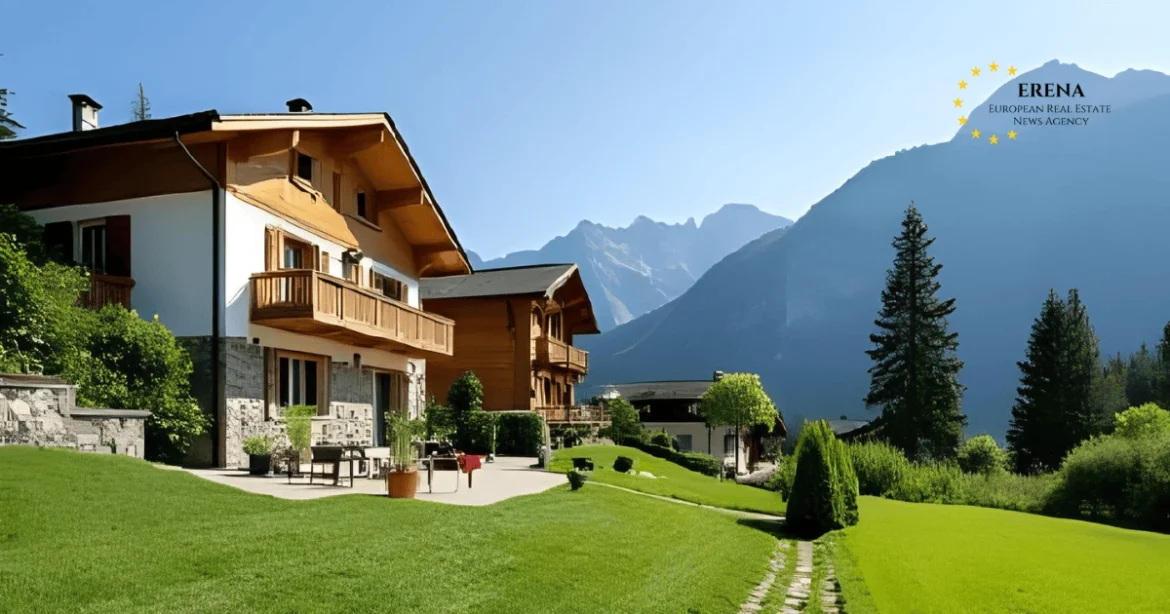The dream of a mountain house—clean air, sweeping views, and slower living—remains alive in 2025. Across Europe, properties under €200,000 still appear, from Spain’s Picos de Europa to Bulgaria’s ski resorts. But while the price tags may look inviting, the real question is whether these homes are smart investments or costly traps.
Spain: Plenty of Houses, Few Habitable
In Asturias and the Picos de Europa, stone village homes list for €50,000 to €180,000. The issue is not availability, but condition. As El País noted:
“En los pueblos hay un embudo… sin vivienda no hay quien se quede.” (“In the villages there is a bottleneck… without housing, nobody stays.”)
Most bargains require heavy renovation, from roofs to wiring. Spain’s suelo rústico law also complicates matters: building new homes is largely banned on rural land, and even converting barns requires strict permits.
“Generally, building a house on rural/non-developable land is not allowed… some pre-existing structures can be rehabilitated, subject to local and regional rules.”
Portugal: Cheap Stone, Costly Upgrades
Serra da Estrela in central Portugal is one of Western Europe’s cheapest mountain regions. In Covilhã, average sale prices are around €2,200–2,600/m² in 2025; in Guarda, about €950–1,000/m². In nearby Manteigas, houses are listed from €13,000, though most need full restoration.
Low entry costs hide future bills. Roofs, heating, and windows often require €30,000–€50,000 in upgrades before a house is comfortable year-round.
Italy: Charm With Seismic Risk
Abruzzo offers some of Italy’s most scenic bargains. Average asking prices are ~€1,365/m² (July 2025), meaning a 90 m² home could sell for under €120,000. Yet the region lies in seismic zones 2 and 3.
“Zone 2 — municipalities may be affected by quite strong earthquakes. Zone 3 — municipalities may be subject to modest shocks.”
Without seismic compliance certificates, banks may refuse lending and insurers may not cover. Cheap homes without reinforcement are liabilities, not bargains.
Bulgaria: Ski Flats Below €100k
Bansko and Razlog continue to draw international buyers. Prices range from €800–€1,500/m², with studios from €60,000–€70,000 and larger apartments around €120,000.
But ownership is meaningless without Act 16, Bulgaria’s occupancy permit:
“This occupancy permit… is the final act… certif[ying] that the building is… fit for occupation.”
Properties lacking Act 16 cannot be legally connected to utilities or rented out.
France: The Ariège Balance
In Ariège, French Pyrenees towns average €1,000–€1,900/m² (Foix ~€1,445; Pamiers ~€1,378). Sub-€200k homes still exist, often habitable but dated. Buyers trade lower prices for the need to modernize interiors and improve insulation.
Romania: The EU’s Cheapest Mountain Houses
The Apuseni mountains feature homes from €45,000–€120,000. Recent OLX listings include a €55,000 house in Lupșa. For less than the cost of a Barcelona studio, buyers can own a farmhouse with land. But infrastructure is limited, and resale times are long.
Montenegro: Žabljak’s Harsh Beauty
In Žabljak, Durmitor cabins list for €90,000–€150,000. Examples include a 200 m² house at €100,000. Stunning landscapes come with harsh winters—blocked roads, limited services, and heavy snow.
The True Cost of “Cheap”
Renovation and modernization often double the initial investment. Typical costs:
- Roof replacement: €12,000–€30,000
- Windows and doors: €6,000–€20,000
- Heating systems: air-to-water pumps often €8,000–€14,000+, geothermal €19,000–€30,000+, traditional boilers cheaper
- Electrical and plumbing: from ~€2,500 for 100 m² rewiring, rising to €10,000+ in older homes
A €100,000 house frequently becomes a €150,000–€170,000 project before move-in.
Verdict: Smart Buy or Hidden Trap?
Mountain homes under €200,000 still exist in 2025. They make sense for lifestyle buyers who want nature and accept renovation challenges. Success depends on three checks:
- Legality first. Spain’s rural land rules, Italy’s seismic laws, and Bulgaria’s Act 16 are deal-breakers.
- Condition and access. Cheap listings often mask heavy repair costs; remote settings mean higher maintenance.
- Exit strategy. Romanian and Montenegrin homes are difficult to resell; buy for lifestyle, not for quick profit.
For dreamers ready to restore and adapt, the mountains remain open. But for investors seeking easy returns, the sub-€200k market is more trap than treasure.

